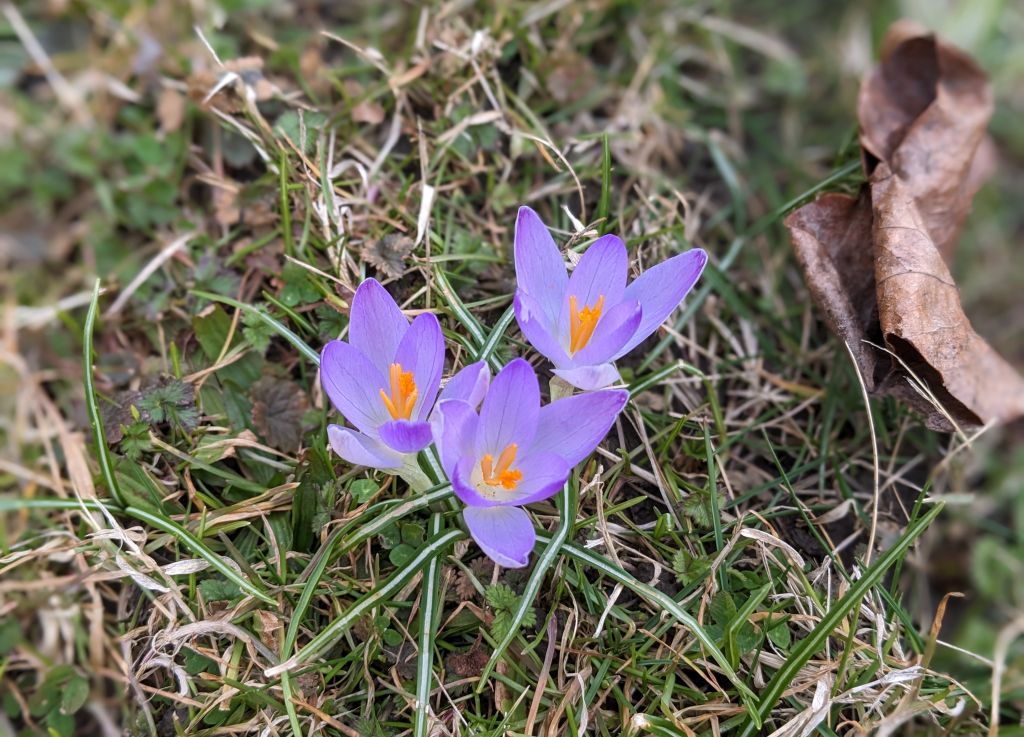
25 February 2023
For seven days this week the temperature stayed above freezing and hit 71 degrees F on Thursday. At 26 degrees above normal, flowers opened on plants and trees.
ALL OF THESE SIGHTINGS (except the crocuses) ARE 4 WEEKS EARLIER THAN LAST YEAR!
My favorites were the early crocuses. Native to Bulgaria, Hungary, Albania and the former Yugoslavia, these woodland crocuses (Crocus tommasinianus) are often seen in gardens but someone in my neighborhood planted them in a grassy front yard. Because the flowers bloom before the grass grows they are in no danger of being mowed.
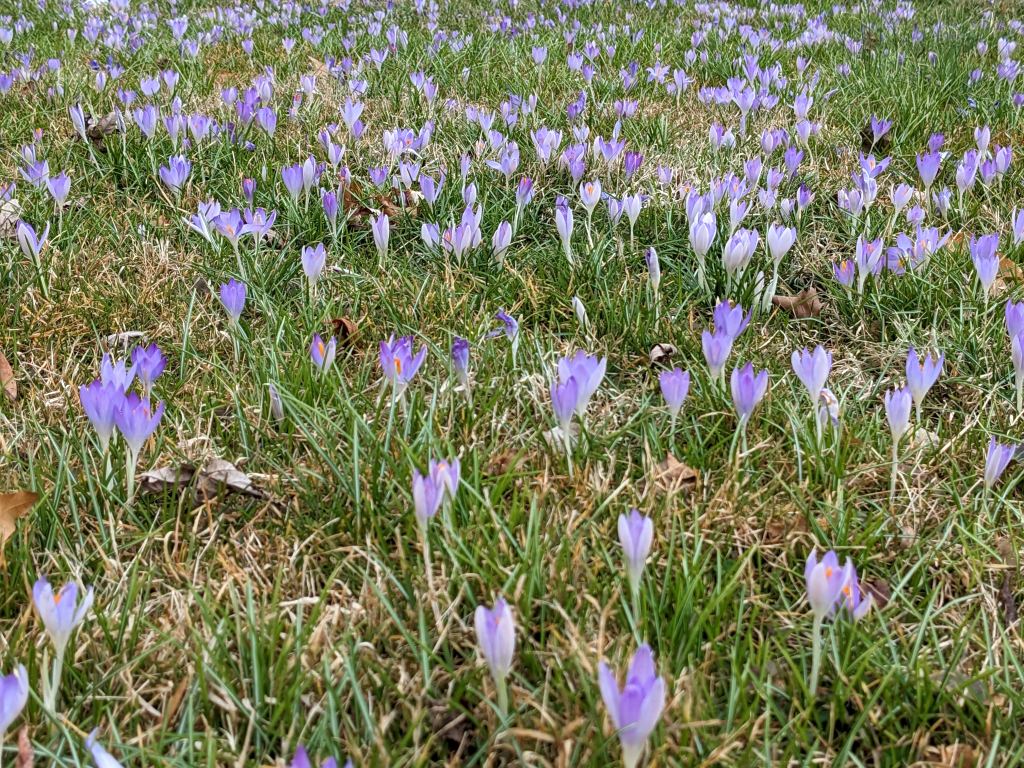
On Pitt’s campus Cornelian cherry trees (Cornus mas) produced yellow flowers.
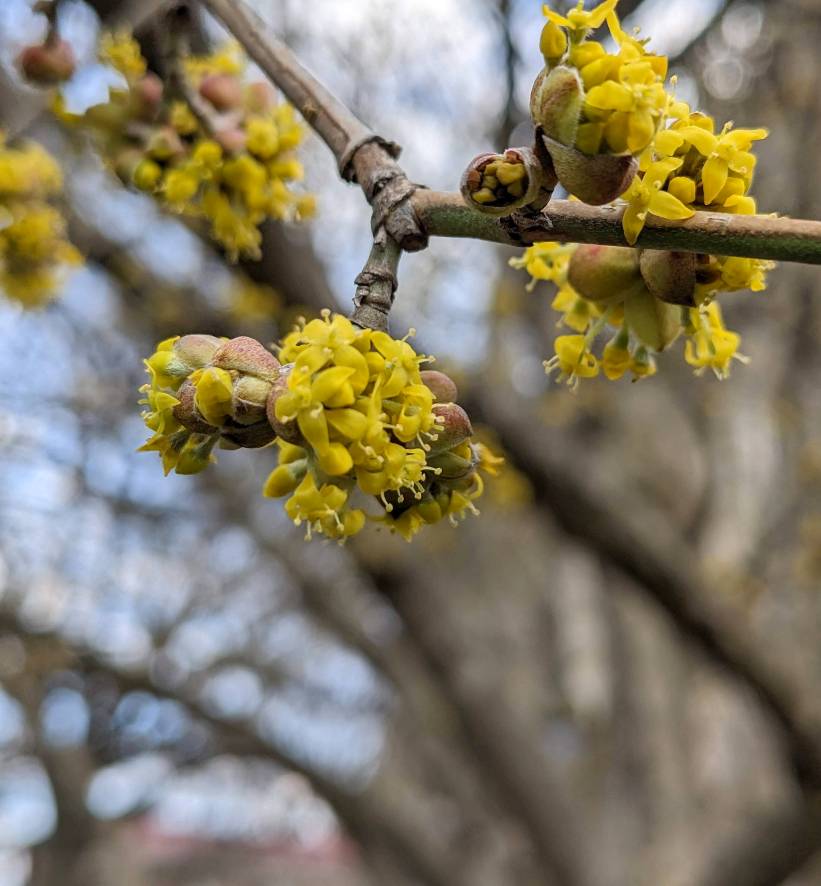
Red maples (Acer rubrum) bloomed next to Carnegie Museum …
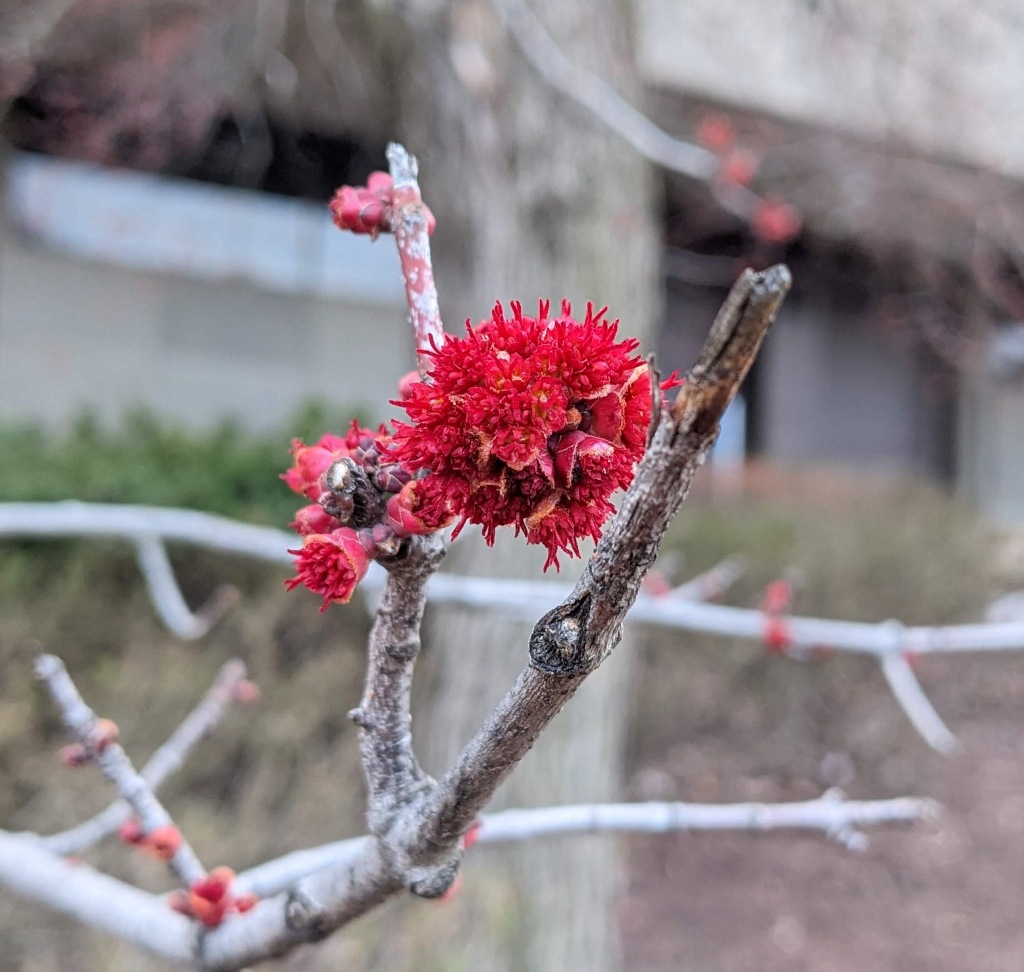
… and at Frick Park the maple branches looked thick with tiny flowers, including yellowish pollen-bearing ones.
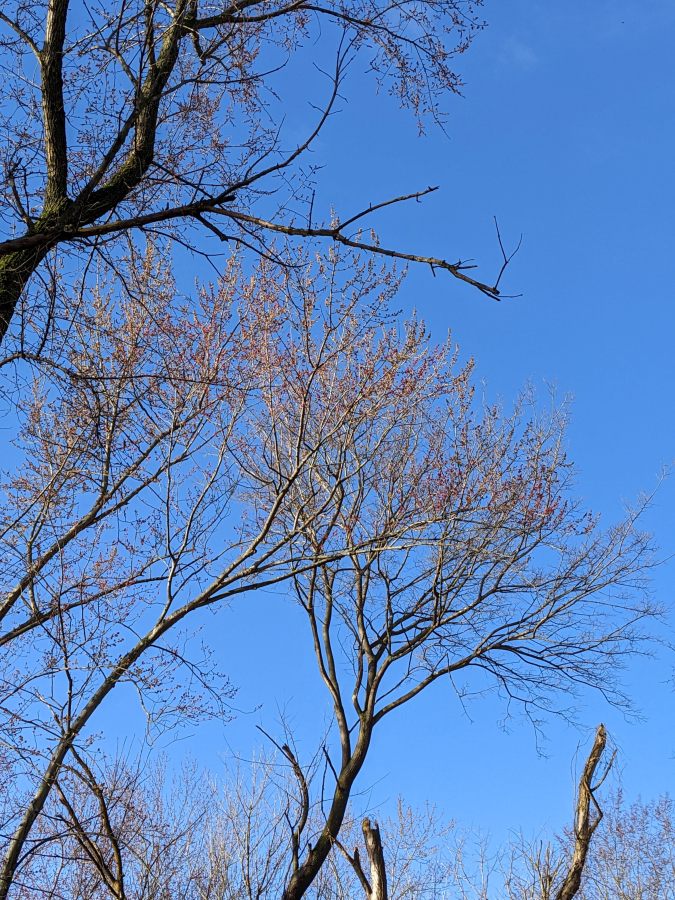
This week, tiny leaves opened on jetbead (Rhodotypos scandens) and a few honeysuckle bushes. Unfortunately invasive plants are first to leaf out.
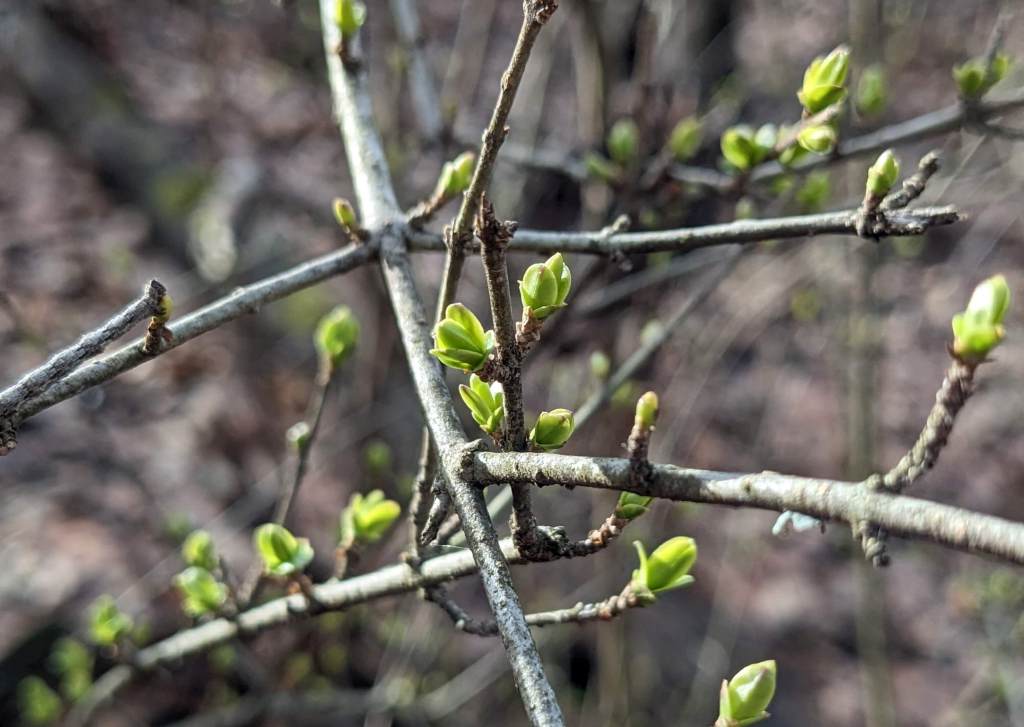
The coming week will be like a wet blanket: above freezing, gusty wind, lots of rain.
(photos by Kate St. John)
An eagle covered with snow; protecting her eggs. OMG.
https://www.yahoo.com/news/bald-eagle-refused-move-got-012705971.html
“A livestream of an eagle nest captured one of the birds nearly buried in snow on Thursday morning.
The eagle, who was incubating its recently laid eggs, rode out a heavy snowstorm from the nest.
The Minnesota Department of Natural Resources said snow can actually provide extra insulation.
A bald eagle in Minnesota was spotted partially buried under a mound of snow, with only its head poking out, as it remained in its nest and waited out a storm in order to keep its eggs warm.
The eagle was captured on the EagleCam managed by Minnesota’s Department of Natural Resources, which is currently livestreaming the nest 24/7 as the pair of birds incubate their eggs. The eagles welcomed their first egg of the season on February 15, followed by another on February 18, according to the DNR.”